Darapsa versicolor, the Hydrangea Sphinx
Darapsa versicolor
(Harris, 1839) Choerocampa versicolor
Hydrangea Sphinx
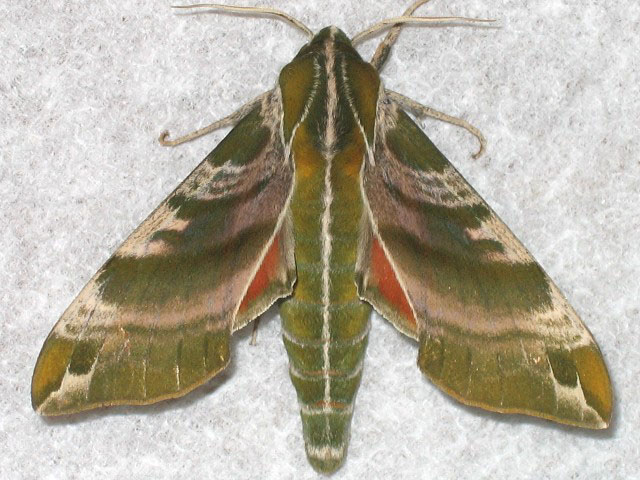
Darapsa versicolor Newton, Sussex County, New Jersey,
courtesy of Joe Garris.
This site has been created by
Bill Oehlke at oehlkew@islandtelecom.com
Comments, suggestions and/or additional information are welcomed by Bill.
TAXONOMY:
Family: Sphingidae, Latreille, 1802
Subfamily: Macroglossinae, Harris, 1839
Tribe: Macroglossini, Harris, 1839
Genus: Darapsa Walker, 1856
Species: versicolor (Harris, 1939)........
|
MIDI MUSIC
......It's a Wonderful World......
copyright C. Odenkirk
ON.OFF
<bgsound src="world.mid" LOOP=FOREVER>
|
DISTRIBUTION:Darapsa versicolor, the Hydrangea Sphinx,
Wing span: 2 1/4 - 3 1/8 inches (5.8 - 8 cm), is found in Maine south to south Florida, west
to Illinois, Missouri, Arkansas, and Mississippi, usually along stream banks where the
water loving larval hosts can be found.
The forewing upperside is often greenish brown (photo to right) with curved dark lines and
pinkish-white patches. The hindwing upperside is pale yellow to reddish brown with white along
the costal margin, greenish brown along the outer margin, and white shaded with greenish
brown on the inner margin. Paul Opler photo. | 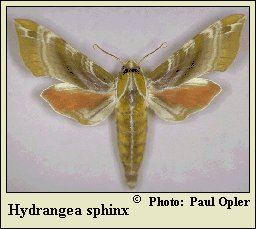 |
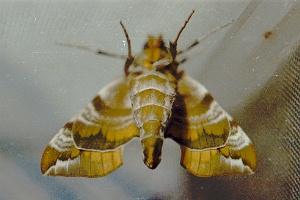
| This sphingid is less common than many of its relatives. The underside is
also very attractive as evidenced in this image I scanned for Doug Malone from Tennessee. |
FLIGHT TIMES: Darapsa versicolor is single brooded throughout its range: from
June-July in the north, March-September in Louisiana, and
February-July in Florida.
ECLOSION:Little is known about the eclosions of the earth pupators, but many believe
pupae wiggle toward the surface just prior to emergence.
SCENTING AND MATING:Darapsa versicolor females extend a scent gland from the posterior of the abdomen
to lure in the night flying males. Both sexes nectar at flowers.
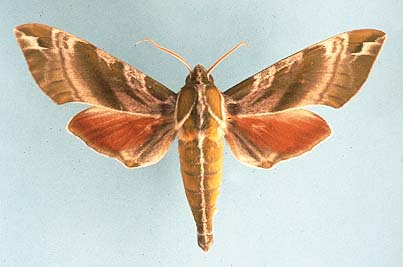
Darapsa versicolor courtesy of James Adams.
EGGS, LARVAE, PUPAE:
Darapsa versicolor larvae feed on
Smooth hydrangea (Hydrangea arborescens), buttonbush
(Cephalanthus occidentalis), and waterwillow
(Decodon verticillatus).
Visit Landscaping Garden Plants - Comprehensive plants,
gardening and landscaping website. 90,000+ plants in it's database.
Females lay translucent yellow-green eggs in twos or threes on the underside
of host leaves. Eggs hatch in approximately seven days, and the young
caterpillars eat their egg shells.
The developing larvae usually become visible inside the shells after
three to four days.
Larval growth is rapid, and caterpillars reach the fifth instar in only
slightly over two weeks.Larvae turn a
deep chocolate brown just prior to pupation, and the "horn" on the tail also turns downward
as pupation draws near.
| 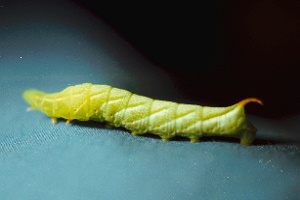 |
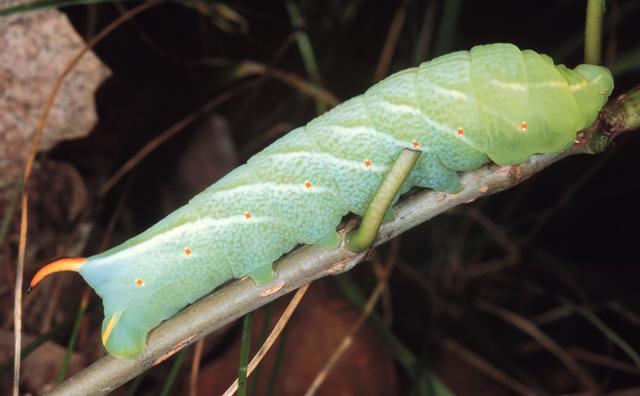
Darapsa versicolor courtesy/copyright
David Wagner.
At pupation time, I pick up such Sphingidae larvae with my fingers and gently put them in a bucket, bottom-lined
with several layers of loose, dry paper towels. The larvae will crawl under the towelling and
pupate on the bottom of the bucket.
This method, a warm dark bucket lined with paper towelling, is
sufficient to induce pupation in most of the earth pupators or those that pupate under litter at or near the surface. | 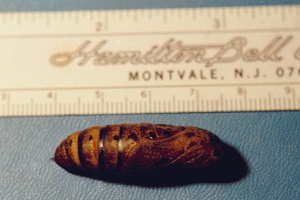 |
Use your browser "Back" button to return to the previous page.
Goto Main Sphingidae Index
Goto Macroglossini Tribe
Goto Central American Indices
Goto Carribean Islands
Goto South American Indices
Goto U.S.A. tables






